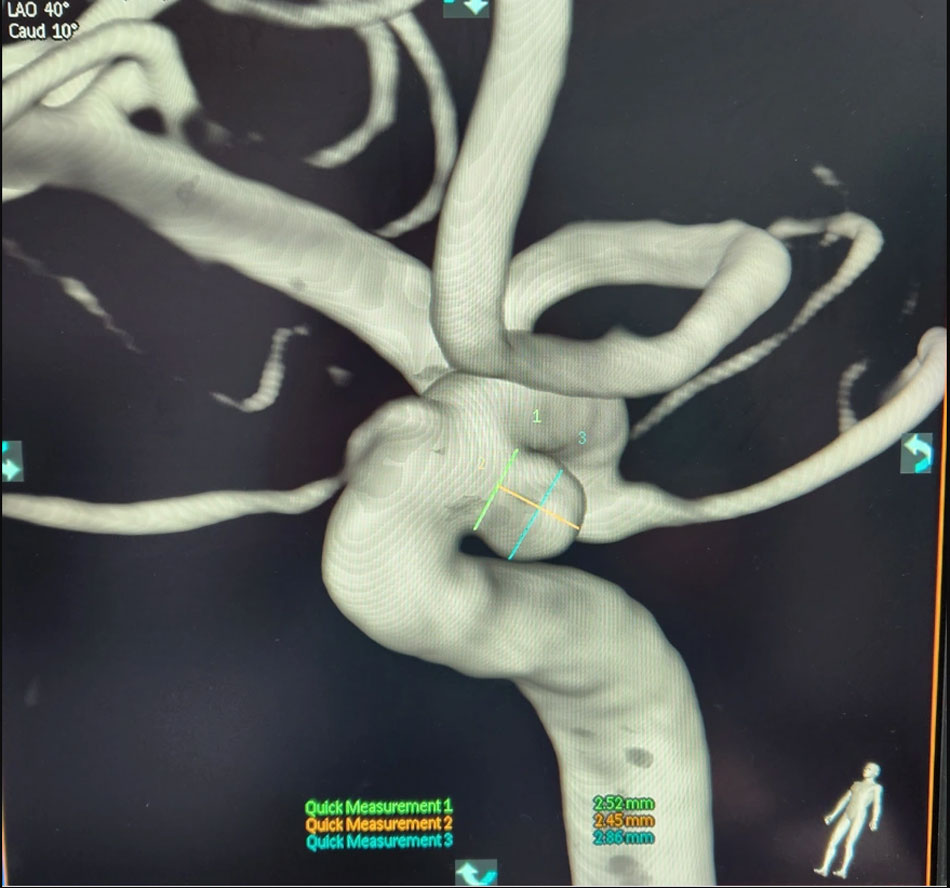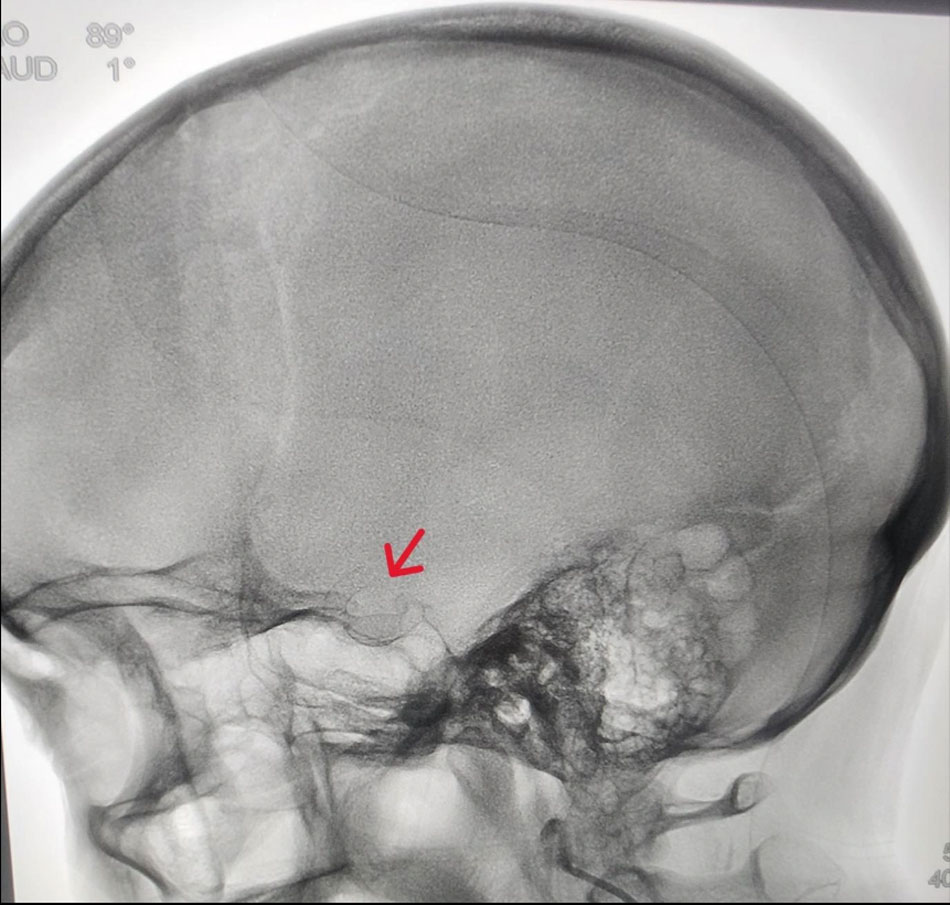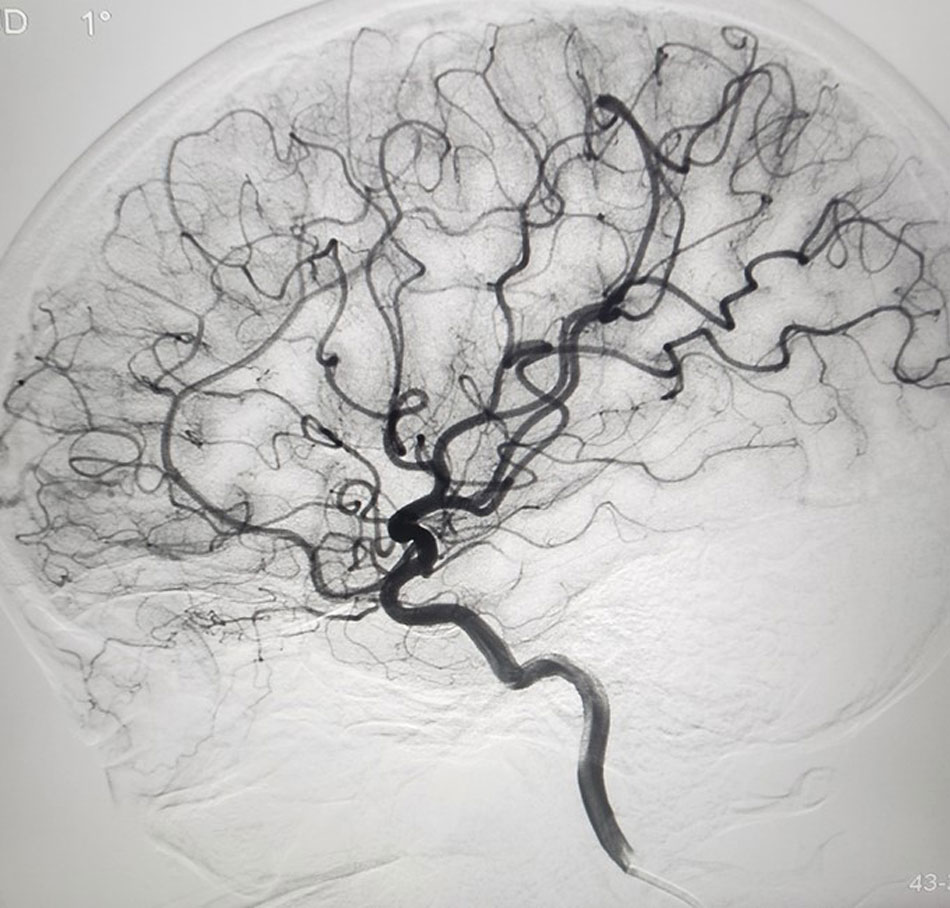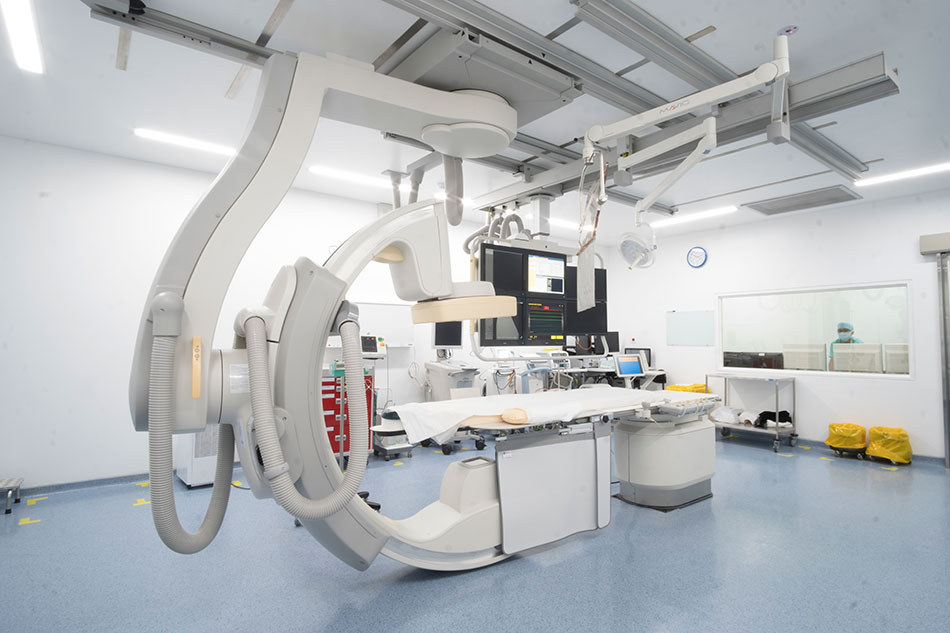Previously, patients with brain aneurysms had to undergo open-skull surgery-a risky surgery with a long recovery time. FV offers endovascular intervention, which enables doctors to treat the aneurysm via a small one centimetre incision in the thigh.
Doctors place a stent to treat a brain aneurysm in a 46-year-old patient
Ms N.T.P. (46 years old, resident of Can Tho) had been suffering from prolonged headaches on the right side of her head for six months. Despite seeking medical advice and using medication, the pain did not subside. Ms T.P. visited FV Hospital for examination at the beginning of 2023.
After reviewing MRI scans of her brain, Dr Nguyen Minh Duc—a specialist in Neurosurgery and Endovascular Neurosurgery—detected an intracranial aneurysm in her right cerebral artery which was gradually enlarging over time. This was the cause of the persistent headaches that Ms T.P. had endured for many years.

The digital subtraction angiography (DSA) results showed a significant intracranial aneurysm in the patient’s cerebral artery.
Ms N.T.P. underwent a digital subtraction angiography (DSA) to visualise the blood vessels. The images revealed a prominent bulging aneurysm in the patient’s brain artery.
“Intracranial aneurysms are highly dangerous; if left untreated, 30 per cent of cases may rupture and cause death. Another 30 per cent of patients who experience a ruptured aneurysm can be saved but may suffer from sequelae such as paralysis or language disorders,” explained Dr Duc. Considering the situation, Ms N.T.P. was recommended for interventional neuroradiology to treat the intracranial aneurysm.

The red arrow indicates the location of the stent placement in the patient’s brain.
The method of treatment via interventional neuroradiology depends on the shape of the aneurysm. If the neck of the aneurysm is narrow, a metal coil will be placed inside it. In the case of patient T.P., the neck of the aneurysm was wide and placing a coil would have caused it to protrude, so Dr Duc chose to use a flow-diverting stent—a device that resembles a scaffold.
Ms T.P.’s treatment took two hours and was performed under general anaesthesia. Dr Duc made a small incision of around one centimetre in the patient’s thigh and threaded a catheter with the stent through the femoral artery up to the brain, precisely to the location of the aneurysm. The stent was placed across the blood vessel, preventing blood flow into the aneurysm.
“When blood no longer flows into the aneurysm, a clot will gradually form inside, and over time, the aneurysm will disappear completely. In the long term, the inner endothelial cells will grow over the stent, forming a new blood vessel layer,” explains Dr Duc.

Six months after the stent placement, the aneurysm inside the patient’s cerebral artery has completely disappeared.
The interventional procedure for patient N.T.P. was successful, and she was discharged the day after. She was prescribed medication to prevent platelet aggregation, which helps to keep the stent open and gradually adapts to her body. When she returned to FV Hospital for a follow-up examination at the end of June 2023, she happily reported that her headaches had completely disappeared. The MRI results showed that the aneurysm inside her cerebral artery had disappeared entirely.
Cerebral artery aneurysms can have vague symptoms but can be life-threatening.
According to Dr Minh Duc, cerebral artery aneurysms account for about five per cent of the population. A concerning aspect is that symptoms are often nonspecific, mainly presenting as headaches, which can be mistaken for other conditions. However, if left untreated, the aneurysm can grow larger over time and may rupture at any moment.
“In the case of a ruptured aneurysm, the patient experiences a sudden, excruciating headache—a thunderclap headache, a pain they have never experienced before in their life,” emphasises Dr Duc.

Dr Nguyen Minh Duc advises individuals with risk factors to undergo screening for cerebral artery aneurysms.
The only way to detect cerebral artery aneurysms early is through brain screening with MRI in individuals with risk factors: those aged 45 and above, with family history of aneurysms, and with conditions affecting blood vessel quality such as diabetes, hypertension, atherosclerosis, obesity, and more. Those experiencing persistent headaches that do not respond to treatment should also undergo MRI screening. In cases where the diagnosis is unclear, a digital subtraction angiography (DSA) may be performed to evaluate the blood vessels.
“The DSA imaging technique can be considered the gold standard for detecting aneurysms and is currently being applied at FV Hospital,” says Dr Duc.
According to Dr Nguyen Minh Duc, previously, the conventional method to treat cerebral artery aneurysms involved a surgical procedure where the patient’s skull is opened and the brain exposed. Surgeon would then use a clip to close off the aneurysm. With advances in minimally invasive medical techniques, the treatment of cerebral artery aneurysms has made significant progress with endovascular intervention, eliminating the need for extensive surgeries in many cases.
“Cerebral artery aneurysms can be treated using endovascular intervention. The key is early detection to enable timely treatment,” advised Dr Minh Duc.

FV Hospital’s modern Interventional Catheterisation Laboratory (Cathlab) is where endovascular interventions for cerebral artery aneurysms are performed.
Treating cerebral artery aneurysms through endovascular intervention offers advantages such as minimal invasiveness, short recovery periods and a high success rate. However, this method requires a well-equipped synchronised Cathlab staffed by experienced neurointerventional specialists to carry out the procedures.
At FV Hospital, the Cathlab is equipped with state-of-the-art technology. As a result, image quality is always very clear, and the low radiation dosage allows doctors to perform more precise interventions in a shorter amount of time. FV Hospital’s neurointerventional team is highly experienced and capable of handling emergency situations related to cerebral artery aneurysms and other cerebrovascular disorders, such as stroke, vascular malformations, and blood vessel imaging.
Please contact FV Hospital when you need consultation on brain aneurysm at: (028) 54 11 33 33.



